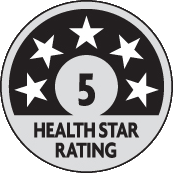Harvest Snaps - Calbee - 230g
This product page is not complete. You can help to complete it by editing it and adding more data from the photos we have, or by taking more photos using the app for Android or iPhone/iPad. Thank you!
×
Barcode: 9351585000925 (EAN / EAN-13)
Quantity: 230g
Brands: Calbee
Categories: Baked pea crisps
Labels, certifications, awards:
Source of fibre, Health Star Rating, Health Star Rating 5
Origin of ingredients: Thailand
Countries where sold: Australia
Matching with your preferences
Environment
Packaging
Transportation
Report a problem
Data sources
Product added on by kiliweb
Last edit of product page on by skcol.
Product page also edited by cirno, segundo, yuka.sY2b0xO6T85zoF3NwEKvllUcT9TcvS3OKAT5s3Sy4Y6MMoLTXc5C54v6aao.
If the data is incomplete or incorrect, you can complete or correct it by editing this page.










